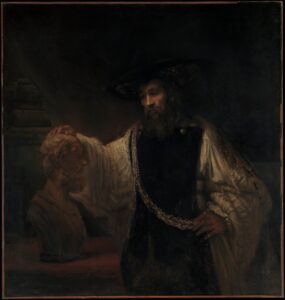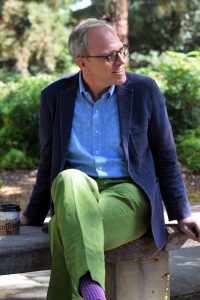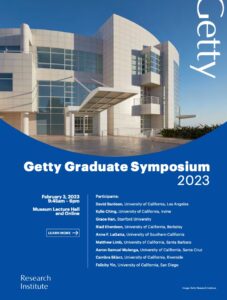Join Us for the 2023 Undergraduate Paths Series!
 Demystifying Graduate School in Art History
Demystifying Graduate School in Art HistoryTuesday, May 9 at Noon via Zoom
Register at https://tinyurl.com/yedd69dx
This panel brings together current graduate students and faculty in art history. Panelists will discuss graduate school, applications, including how to put together and application and how to choose which programs are appropriate for you. Panelists will discuss their own experiences as graduate students of art history, what it entails, managing expectations and workloads, and strategies for successfully navigating graduate school.
Speakers:
Lily Allen, PhD candidate, UCR
Alan Carillo, PhD student, University of Iowa
Yong Cho, Assistant Professor, UCR
Rebekkah Hart, PhD student, Case Western Reserve University
Putting Your Art History Degree to Work
Tuesday, May 16 at Noon via Zoom
Register at https://tinyurl.com/yckz52tm
This panel brings together working professionals with undergraduate and advanced degrees in art history who have gone on to have a broad range of careers. Panelists will discuss their positions and their career paths, including how their art history degrees prepared them for their positions.
Speakers:
Cosette Bruhns Alonso, Contemporary Publishing Fellow, Penn Libraries, University of Pennsylvania
Maite Alvarez, Project Specialist, The J. Paul Getty Museum, Los Angeles
Karen Gudino-Flores, Riverside Public Library, Main Library
Diego Roberto Irigoyen, Digital Resource Specialist, Department of Art History, UCR


 The lecture is dedicated to an attempt at a “phenomenology” of female bust portraits of the Quattrocento. The focus is on the enigmatic bust of an unknown woman by Francesco Laurana in the Viennese Kunstkammer, which is characterized by its unusual polychrome. In the context of a comparative object analysis and against the cultural-historical background of a Petrarchan topic, the question of how this and other female busts ‘communicate’ with the viewer and what significance their fragmentary object character has will be pursued. Although not primarily motivated by the art-historical “passion for identifying” (Didi-Huberman), the considerations ultimately lead to a proposed new identification.
The lecture is dedicated to an attempt at a “phenomenology” of female bust portraits of the Quattrocento. The focus is on the enigmatic bust of an unknown woman by Francesco Laurana in the Viennese Kunstkammer, which is characterized by its unusual polychrome. In the context of a comparative object analysis and against the cultural-historical background of a Petrarchan topic, the question of how this and other female busts ‘communicate’ with the viewer and what significance their fragmentary object character has will be pursued. Although not primarily motivated by the art-historical “passion for identifying” (Didi-Huberman), the considerations ultimately lead to a proposed new identification.
 At Durham, Professor Endres will work on his current book project on “Style” as an interdisciplinary category of the study of texts, images and music. As part of his project, he will be in close collaboration with Professor Jonathan Long from Durham’s School of Modern Languages & Cultures. Professor Long is also the co-director of the Center for Visual Arts and Culture at Durham. The collaboration is based on their mutual research interest in German Literature, literary theory, and the study of visual culture in relation to literary artefacts.
At Durham, Professor Endres will work on his current book project on “Style” as an interdisciplinary category of the study of texts, images and music. As part of his project, he will be in close collaboration with Professor Jonathan Long from Durham’s School of Modern Languages & Cultures. Professor Long is also the co-director of the Center for Visual Arts and Culture at Durham. The collaboration is based on their mutual research interest in German Literature, literary theory, and the study of visual culture in relation to literary artefacts. The Getty Research Institute hosted the fifth annual Getty Graduate Symposium, which showcased the work of emerging scholars from art history graduate programs across California. Organized into three sessions, the symposium included nine individual presentations, panel discussions moderated by faculty mentors, and Q&A sessions with the audience.
The Getty Research Institute hosted the fifth annual Getty Graduate Symposium, which showcased the work of emerging scholars from art history graduate programs across California. Organized into three sessions, the symposium included nine individual presentations, panel discussions moderated by faculty mentors, and Q&A sessions with the audience.